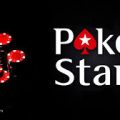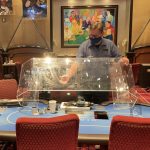
Newest Trends in Online Poker 2015: Lotteries, Tournaments, and Appealing to the Little Man

Online poker operators cater to the little man in 2015 with a raft of positive changes. (Image: venel.me)
Online poker has undergone a number of epistemic shifts over the last few years and 2015 saw yet more winds of change blow through the industry.
As with all industries, evolution is a must for those that want to survive.
Fortunately, online poker has obeyed this most basic of business principles in the last 12 months by shifting its focus from the big hitters to the little leaguers.
Online Poker’s Circular Evolution
When online poker first hit the big time it was awash with games, deals and promotions designed to attract novice players to the game.
Using Chris Moneymaker as the embodiment of its marketing drive, platforms such as PokerStars would routinely incentivize casual players to ante-up.
As these novices gradually turned into hardened grinders the industry began to change with them.
Where it was once common for newbies to receive the lion’s share of an operator’s attention, the market gradually began to embrace regular players with increased prizepools and options for the highest stake events.
However, a change has been brewing for a number of years and in 2015 that evolution was brought to the fore.
Thanks to a raft of operational changes by the leading online poker operators, the game has circled back to its original state.
PokerStars Uses Its Common Cents
It’s possible to give poker a number of headlines in 2015, the overriding theme that dominates them all is a move towards the casual player.
Although many sites have shifted their focus onto the humble novice in the last 12 months, the most apparent change has taken place at PokerStars.
Traditionally a platform reserved for serious grinders that wanted to best value tournaments and cash games, this site is now a haven for casual players.
Prompted by Amaya’s takeover in 2014, this change of tact has seen a number of innovations aimed at casual players introduced in the last 12 months.
From sponsorship deals with major sports stars such as Cristiano Ronaldo to new MTT festival called Common Cents ($250,000 in prizes and buy-ins no higher than $1), PokerStars became one of the biggest advocates for casual players in 2015.
Sites Tackle Tracking Software
Also jumping on the little man’s bandwagon and riding towards the future was the likes of partypoker.
In a bid to curb the influence of professional players, the online poker operator introduced a number of changes to its system.
In addition to explicitly saying that third-party tracking software, including HUDs, was no longer permitted, partypoker altered its seating options.
Following Full Tilt’s lead, partypoker stopped players from being able to choose where they wanted to sit.
Instead of seasoned players being able to seek out and prey upon weaker opponents through crafty table selection, partypoker switched its system so that players were automatically seated at stakes of their choice.
Novice Players Win the Poker Lottery
Another way in which online poker upped its appeal to the casual player in 2015 was the continued emphasis on lottery-style tournaments. PokerStars celebrated the one year anniversary of its Spin & Go tournaments by injecting its games with $1 million jackpots.
This promotion naturally increased traffic on PokerStars’ international platform, but it was the presence of the games in Italy that made the headlines. With the Italian online poker economy still experiencing a slump, lottery-style tournaments stepped to save the day (sort of) in 2015.
Although revenues remained low, Spin & Go tournaments helped increase the market’s MTT revenue by 1.3 percent.
With cash games down by 24 percent in 2015, Italian operators, including PokerStars, were somewhat buoyed by the upturn in lottery-style SNG interest.
While this won’t be enough to save the Italian online poker industry, it is yet another sign that the game is now favoring the casual player.
In fact, with sports betting and casino products also being merged with various poker products, it’s likely that even more focus will be put on novices in 2016.















0 Comments